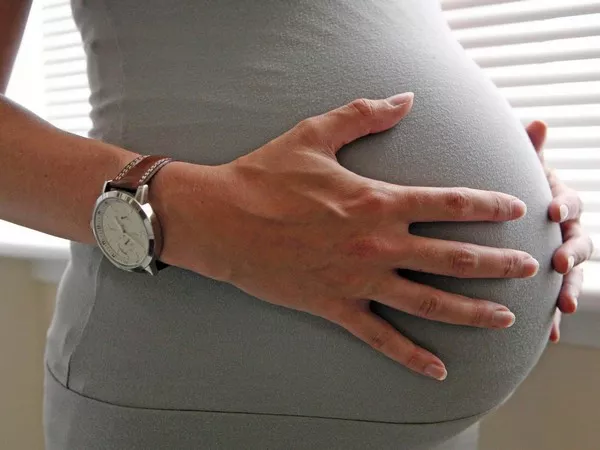Twins have always been a source of fascination and wonder, often seen as a special blessing for families. While twin births occur relatively infrequently compared to singleton births, they continue to captivate the interest of many. The occurrence of twins can be influenced by various factors, ranging from genetic predisposition to maternal age and ethnicity. In this article, we will delve into the fascinating world of twin births and explore the factors that contribute to an increased likelihood of having twins.
1. Types of Twins:
Before delving into the factors influencing twin births, it’s essential to understand the different types of twins:
a) Monozygotic Twins (Identical Twins): Monozygotic twins occur when a single fertilized egg (zygote) splits into two embryos, resulting in genetically identical twins. They share the same genetic makeup and are of the same sex.
b) Dizygotic Twins (Fraternal Twins): Dizygotic twins result from the simultaneous release and fertilization of two separate eggs by two different sperm cells. As a result, dizygotic twins are genetically distinct individuals and may be of the same or different sexes.
2. Age and Twin Births:
One of the most significant factors influencing the likelihood of having twins is maternal age:
a) Advanced Maternal Age: Women over the age of 30, particularly those in their late 30s and early 40s, have a higher likelihood of releasing multiple eggs during ovulation. This increases the chances of conceiving dizygotic twins.
b) Hormonal Changes: As women age, hormonal changes can affect the ovulation process, leading to the release of more than one egg during a single menstrual cycle.
3. Family History:
Family history and genetics also play a crucial role in the likelihood of having twins:
a) Maternal History: If a woman has a family history of twins, particularly on her mother’s side, her chances of conceiving twins may be higher. However, this factor primarily influences dizygotic twins.
b) Ethnicity: Certain ethnicities have higher incidences of twin births. For example, African and Central African populations have a higher likelihood of having twins, while Asian populations have lower rates.
c) Genetic Predisposition: Genetic factors can contribute to the likelihood of releasing multiple eggs during ovulation, increasing the chances of conceiving dizygotic twins.
4. Fertility Treatments:
The use of fertility treatments, such as in vitro fertilization (IVF) and ovulation-stimulating medications, can significantly increase the chances of having twins:
a) IVF: During IVF, multiple embryos are often implanted to increase the chances of a successful pregnancy. As a result, women undergoing IVF have a higher likelihood of conceiving twins or higher-order multiples.
b) Ovulation-Stimulating Medications: Medications used to stimulate ovulation, such as clomiphene citrate, can lead to the release of multiple eggs and increase the chances of dizygotic twin pregnancies.
5. Body Mass Index (BMI):
Some studies suggest that women with higher body mass index (BMI) may have a slightly increased likelihood of conceiving twins. However, the underlying reasons for this association are not yet fully understood.
6. Parity (Number of Previous Pregnancies):
Women who have had multiple pregnancies in the past may have a slightly increased likelihood of having twins in subsequent pregnancies. The exact reasons for this association are not entirely clear, but it may be related to hormonal changes or other physiological factors.
7. Geographical Location:
Twin birth rates can vary significantly based on geographical location:
a) West Africa: Countries in West Africa, such as Nigeria and Benin, have some of the highest twin birth rates globally.
b) Central Africa: Certain Central African countries, including the Democratic Republic of Congo, also have high twin birth rates.
c) Asia and Latin America: Countries in Asia and Latin America generally have lower twin birth rates compared to African nations.
8. Overall Incidence of Twin Births:
Despite the various factors influencing twin births, it’s important to note that the overall incidence of twin births remains relatively low. The rate of twin births can vary between regions and populations, with the global average being around 12 per 1,000 births.
Conclusion:
Twin births continue to captivate the imagination and remain a topic of fascination for many. While the occurrence of twins is influenced by various factors, the most significant contributors include maternal age, family history, and the use of fertility treatments. Women over the age of 30, particularly those in their late 30s and early 40s, have a higher likelihood of releasing multiple eggs during ovulation, increasing the chances of conceiving twins. Additionally, women with a family history of twins and certain ethnic backgrounds may also have an elevated likelihood of having twins.
The use of fertility treatments, such as IVF and ovulation-stimulating medications, can significantly increase the chances of conceiving twins. However, it’s essential to remember that twin births, while fascinating, are relatively rare in comparison to singleton births. Understanding the factors that contribute to the likelihood of having twins can provide valuable insights for individuals and families who are interested in expanding their understanding of the miracle of twin births.


